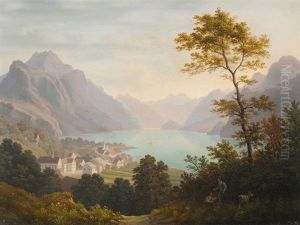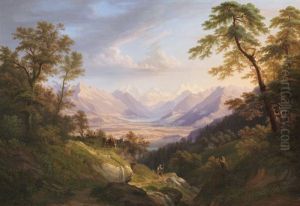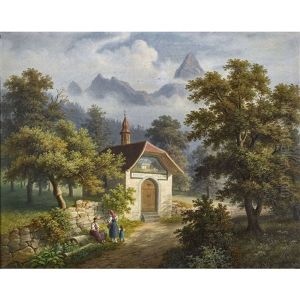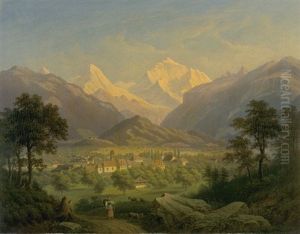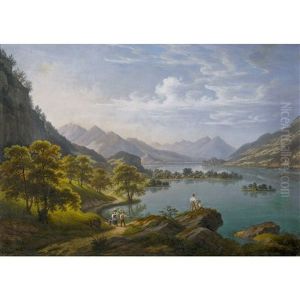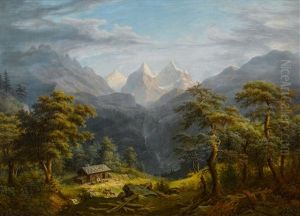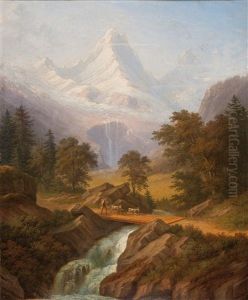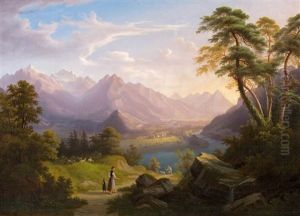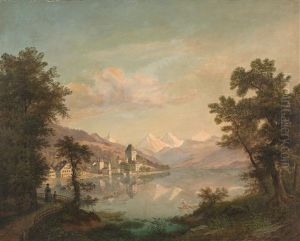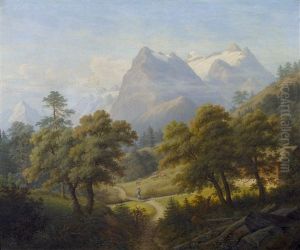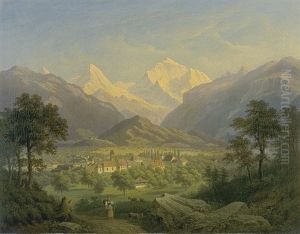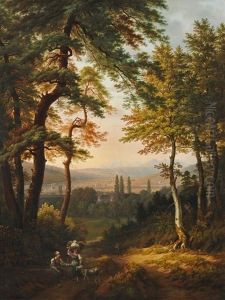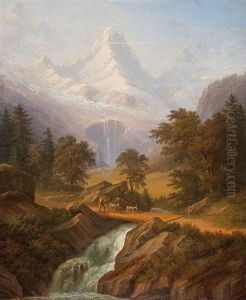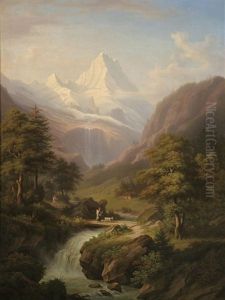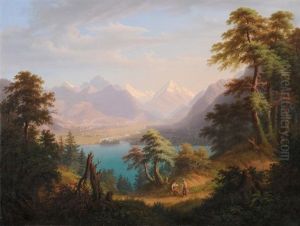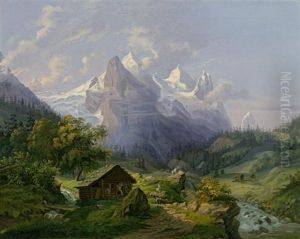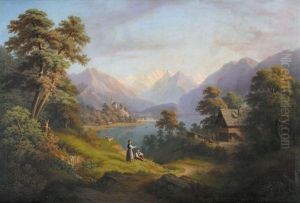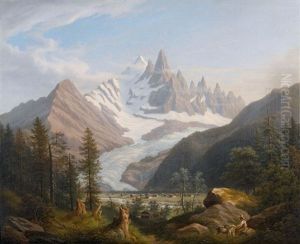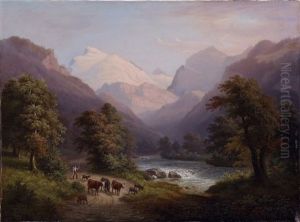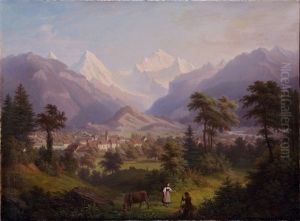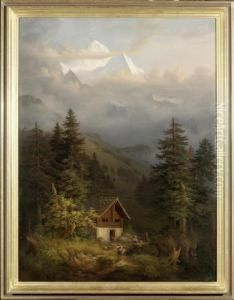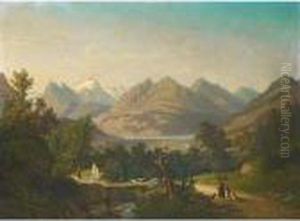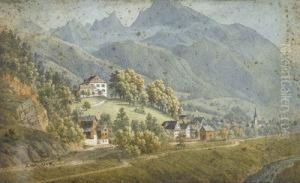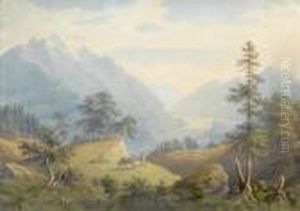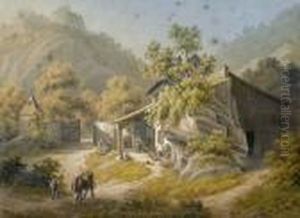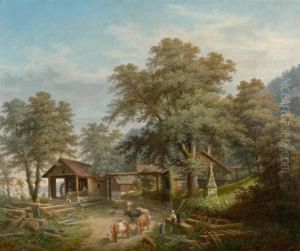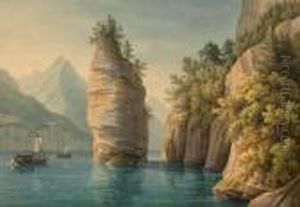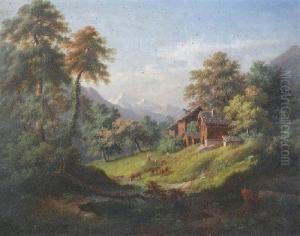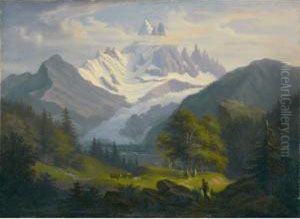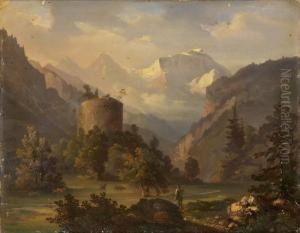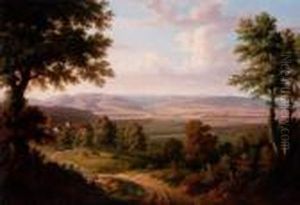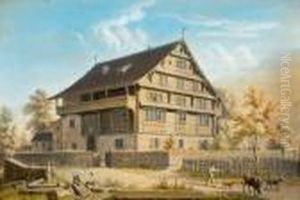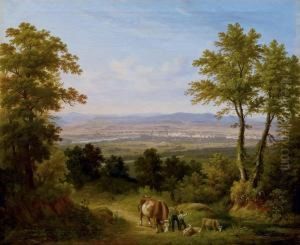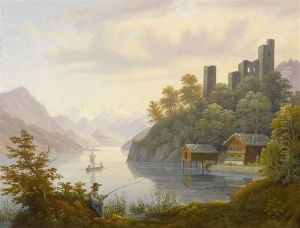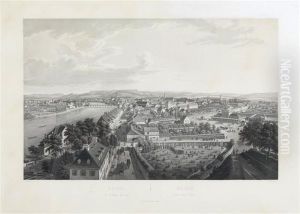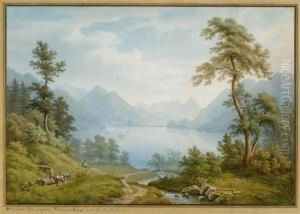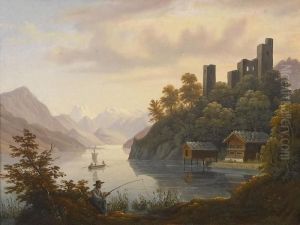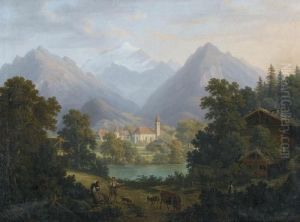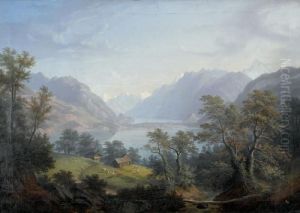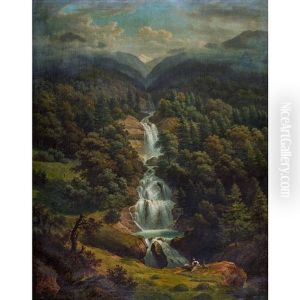Anton Winterlin Paintings
Anton Winterlin was a Swiss-German painter and illustrator born on October 10, 1805, in Basel, Switzerland. His artistic journey began with an education in drawing and engraving at the Basel Art School. He further honed his skills by studying under the master engraver Christian von Mechel. In 1829, Winterlin moved to Karlsruhe, Germany, where he continued his artistic development at the Grand Ducal Baden Art School, studying under the landscape painter Johann Wilhelm Schirmer.
Winterlin was primarily known for his detailed landscapes and genre scenes. His works often depicted the picturesque countryside of the Black Forest region and the Swiss Alps, capturing the beauty and tranquility of these areas. He was adept at using both oil and watercolor mediums, and his engravings also gained considerable attention during his lifetime.
Throughout his career, Winterlin exhibited a keen interest in the natural world, which is evident in his landscape paintings. His style was influenced by the Romantic movement, which emphasized emotion and individualism as well as glorification of the past and nature. He conveyed a sense of peacefulness and harmony in his representations of nature, which resonated with the Romantic ideals of his time.
In addition to his landscape work, Winterlin also created illustrations for various publications. His illustrations contributed to books and periodicals, often enhancing the texts with visual depictions of the described scenes or subjects. These works were well-received and added to his reputation as an accomplished artist and illustrator.
Winterlin's contributions to art were recognized during his lifetime, and he became a respected member of the art community in Karlsruhe. He continued to create art throughout his life, sharing his love for the natural landscapes of his homeland with a wider audience.
Anton Winterlin passed away on April 26, 1894, in Karlsruhe, Germany. Today, his works can be found in various art collections and museums, and they continue to be appreciated by art enthusiasts and collectors for their embodiment of 19th-century Romantic landscape painting.
